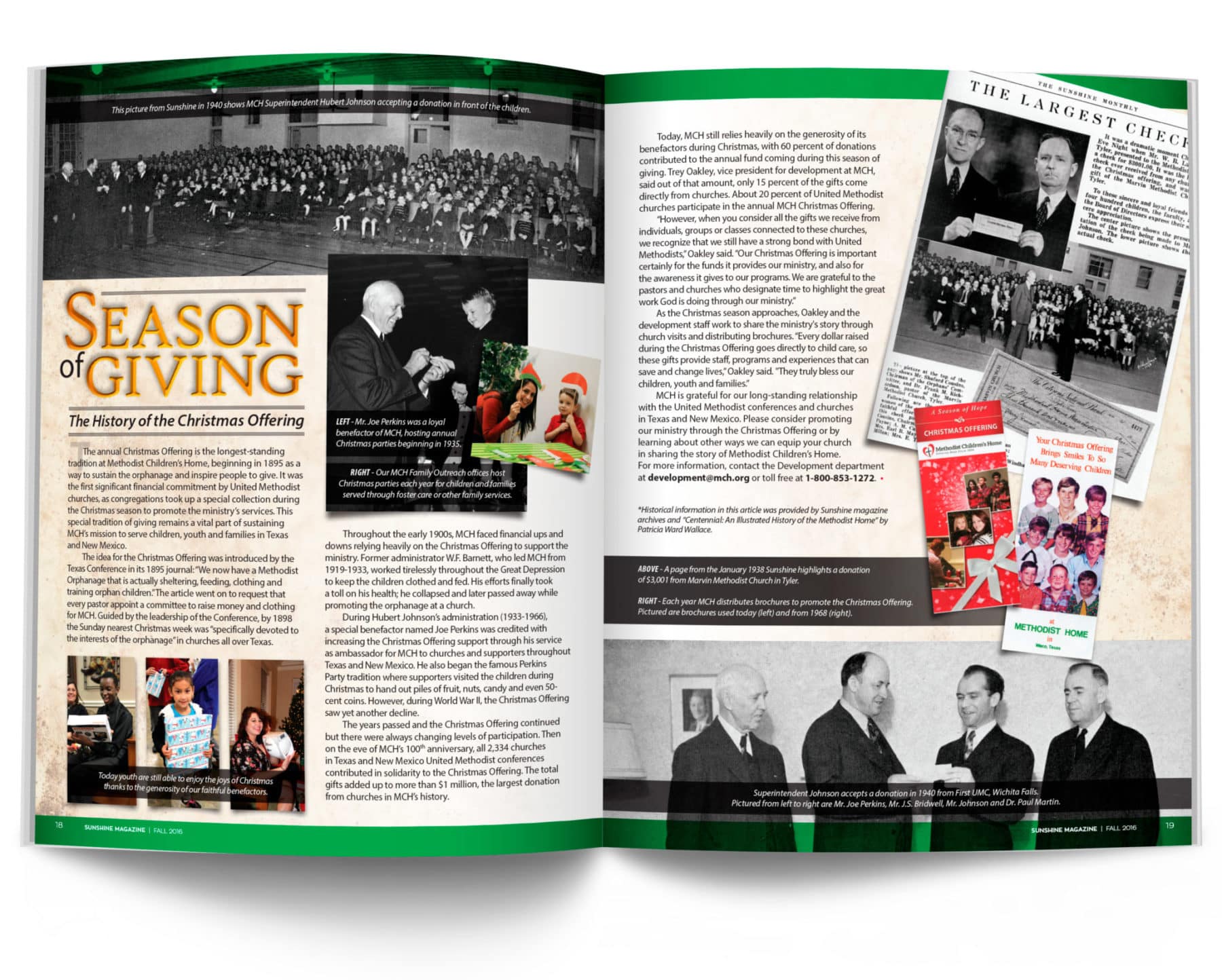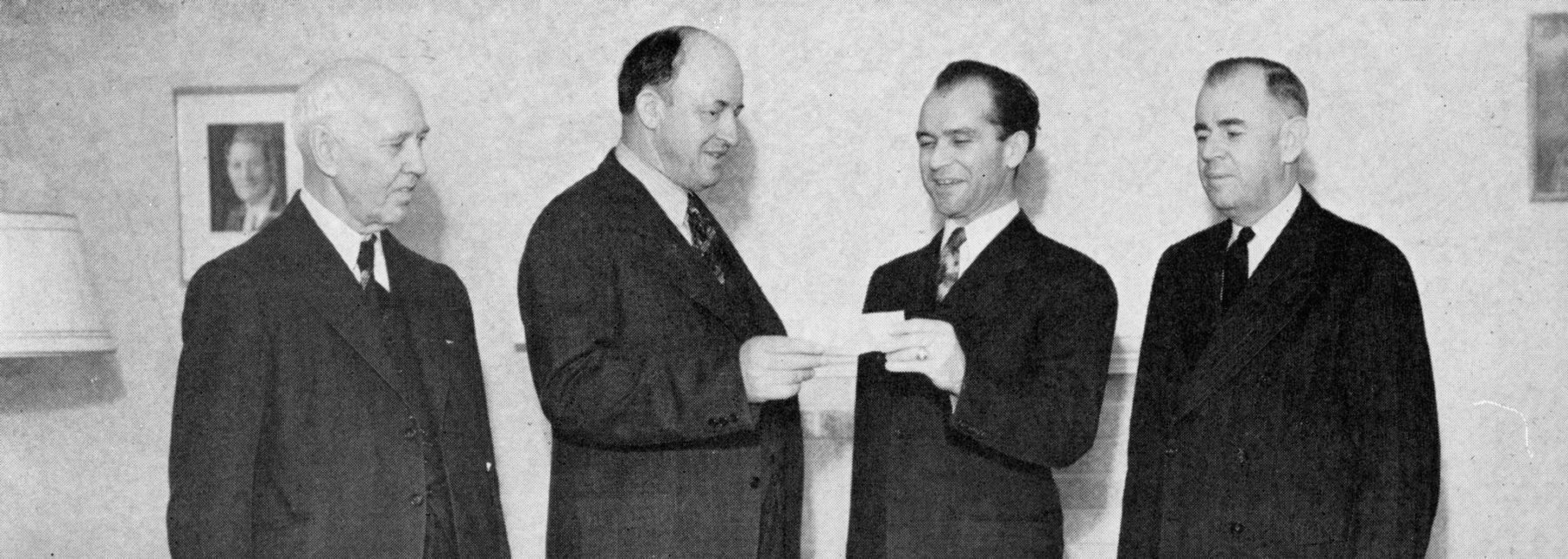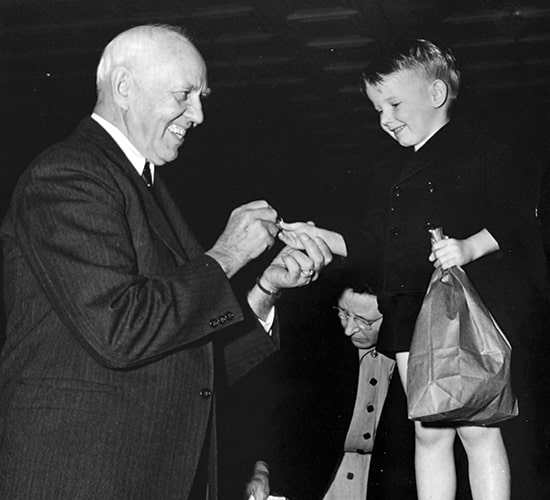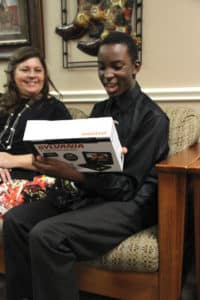 The History of the Christmas Offering
The History of the Christmas Offering
The annual Christmas Offering is the longest-standing tradition at Methodist Children’s Home, beginning in 1895 as a way to sustain the orphanage and inspire people to give. It was the first significant financial commitment by United Methodist churches, as congregations took up a special collection during the Christmas season to promote the ministry’s services. This special tradition of giving remains a vital part of sustaining MCH’s mission to serve children, youth and families in Texas and New Mexico.
The idea for the Christmas Offering was introduced by the Texas Conference in its 1895 journal: “We now have a Methodist Orphanage that is actually sheltering, feeding, clothing and training orphan children.” The article went on to request that every pastor appoint a committee to raise money and clothing for MCH. Guided by the leadership of the Conference, by 1898 the Sunday nearest Christmas week was “specifically devoted to the interests of the orphanage” in churches all over Texas.

Throughout the early 1900s, MCH faced financial ups and downs relying heavily on the Christmas Offering to support the ministry. Former administrator W.F. Barnett, who led MCH from 1919-1933, worked tirelessly throughout the Great Depression to keep the children clothed and fed. His efforts finally took a toll on his health; he collapsed and later passed away while promoting the orphanage at a church.
During Hubert Johnson’s administration (1933-1966), a special benefactor named Joe Perkins was credited with increasing the Christmas Offering support through his service as ambassador for MCH to churches and supporters throughout Texas and New Mexico. He also began the famous Perkins Party tradition where supporters visited the children during Christmas to hand out piles of fruit, nuts, candy and even 50-cent coins. However, during World War II, the Christmas Offering saw yet another decline.

The years passed and the Christmas Offering continued but there were always changing levels of participation. Then on the eve of MCH’s 100th anniversary, all 2,334 churches in Texas and New Mexico United Methodist conferences contributed in solidarity to the Christmas Offering. The total gifts added up to more than $1 million, the largest donation from churches in MCH’s history.
Today, MCH still relies heavily on the generosity of its benefactors during Christmas, with 60 percent of donations contributed to the annual fund coming during this season of giving. Trey Oakley, vice president for development at MCH, said out of that amount, only 15 percent of the gifts come directly from churches. About 20 percent of United Methodist churches participate in the annual MCH Christmas Offering.
“However, when you consider all the gifts we receive from individuals, groups or classes connected to these churches, we recognize that we still have a strong bond with United Methodists,” Oakley said. “Our Christmas Offering is important certainly for the funds it provides our ministry, and also for the awareness it gives to our programs. We are grateful to the pastors and churches who designate time to highlight the great work God is doing through our ministry.”


As the Christmas season approaches, Oakley and the development staff work to share the ministry’s story through church visits and distributing brochures.
“Every dollar raised during the Christmas Offering goes directly to child care, so these gifts provide staff, programs and experiences that can save and change lives,” Oakley said. “They truly bless our children, youth and families.”
MCH is grateful for our long-standing relationship with the United Methodist conferences and churches in Texas and New Mexico. Please consider promoting our ministry through the Christmas Offering or by learning about other ways we can equip your church in sharing the story of Methodist Children’s Home. For more information, contact the Development department at development@mch.org or toll free at 1-800-853-1272.
*Historical information in this article was provided by Sunshine magazine archives and “Centennial: An Illustrated History of the Methodist Home” by Patricia Ward Wallace.
Leave a Reply